AMD AM1 Kabini Part 2: Athlon 5350/5150 and Sempron 3850/2650 Tested
by Ian Cutress on May 29, 2014 2:00 PM ESTFor our discrete GPU benchmarks, we have split them up into the different GPU configurations we have tested. We have access to both MSI GTX 770 Lightning GPUs and ASUS reference HD 7970s, for SLI and Crossfire respectively. These tests are all run at 1080p and maximum settings, reporting the average and minimum frame rates. Due to the limitations of the Bay Trail-D Celeron SoCs and their PCIe lanes, we cannot obtain numbers for these devices.
dGPU Benchmarks: 1x MSI GTX770 Lightning
F1 2013
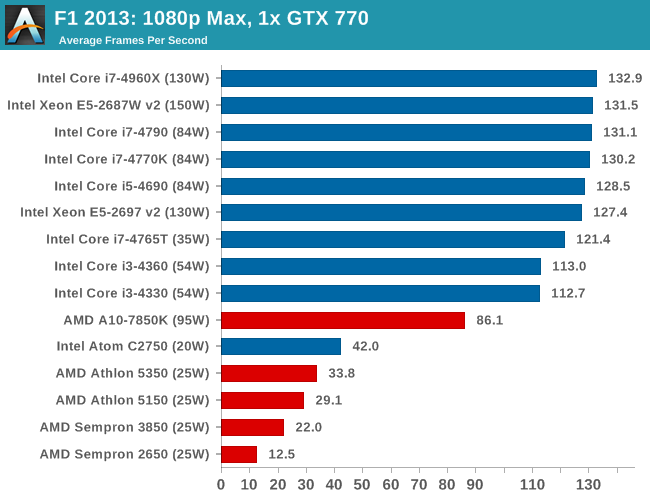
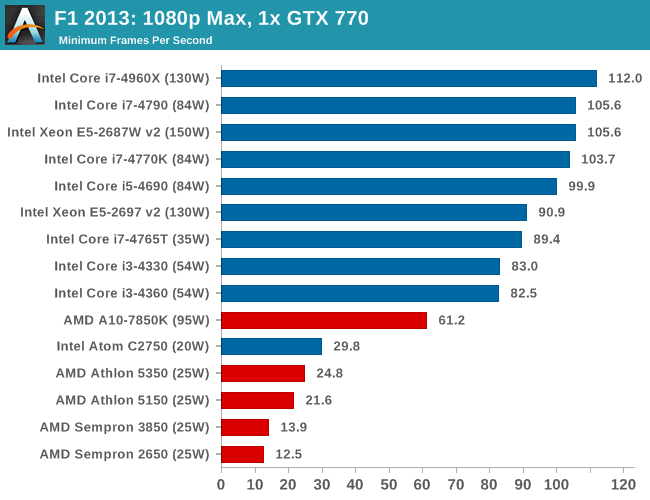
Bioshock Infinite
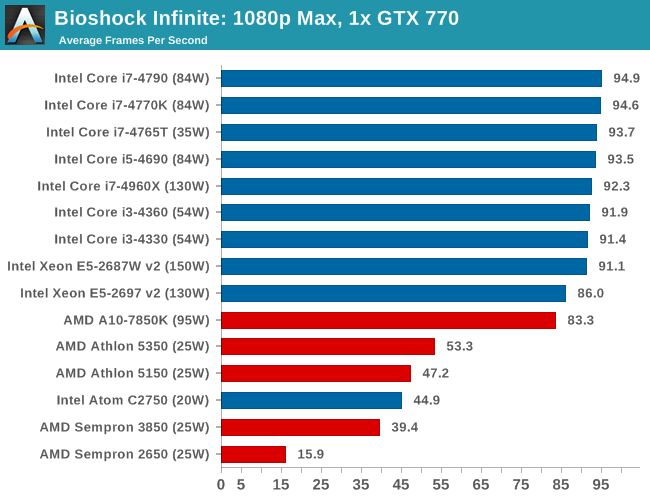

Tomb Raider
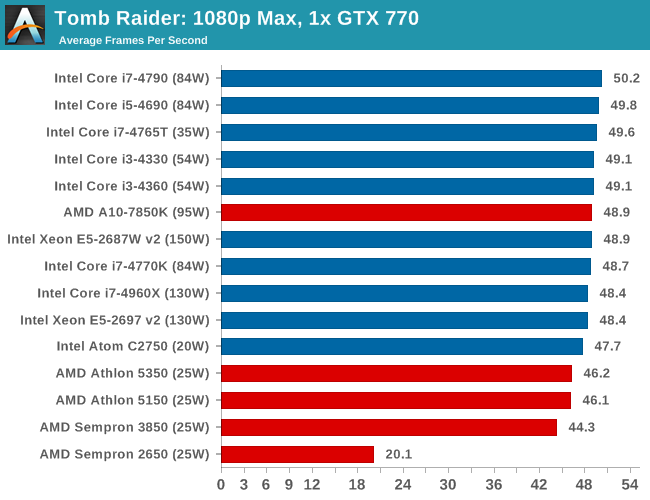

Sleeping Dogs
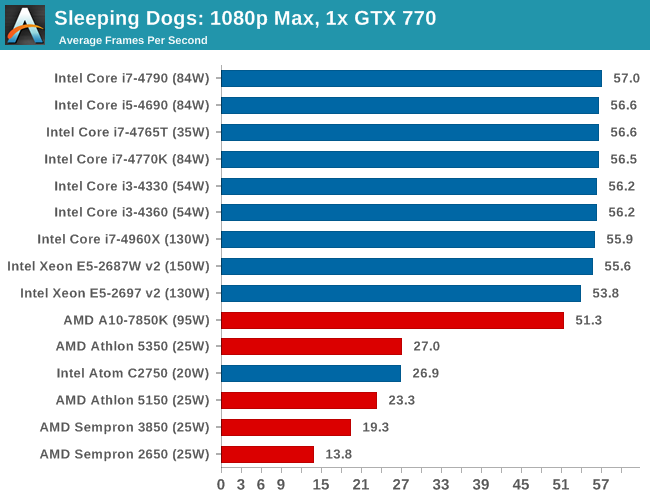
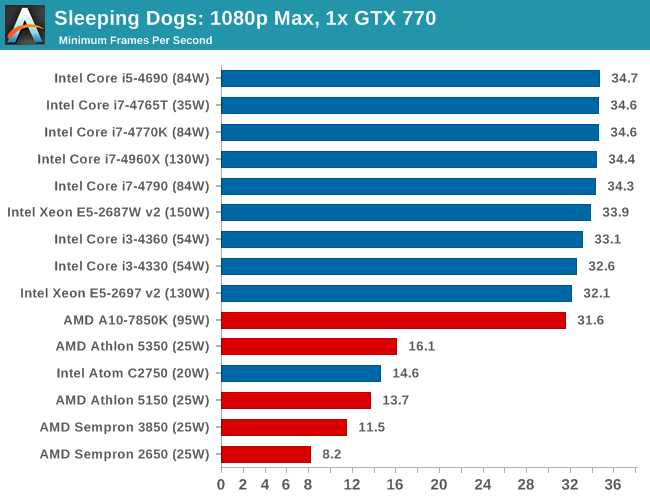
Company of Heroes 2
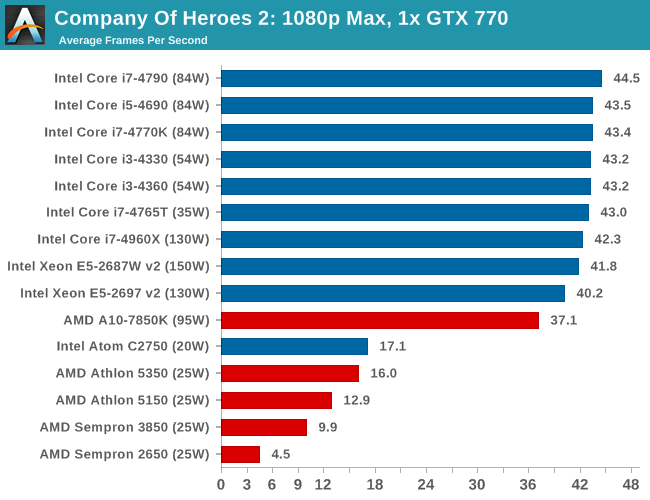
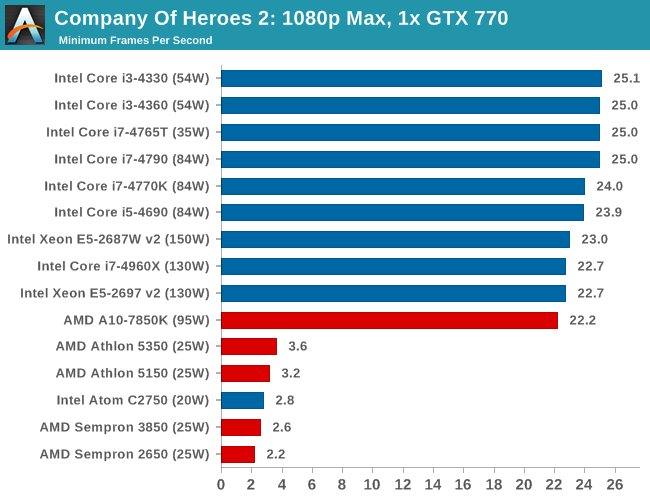
Battlefield 4
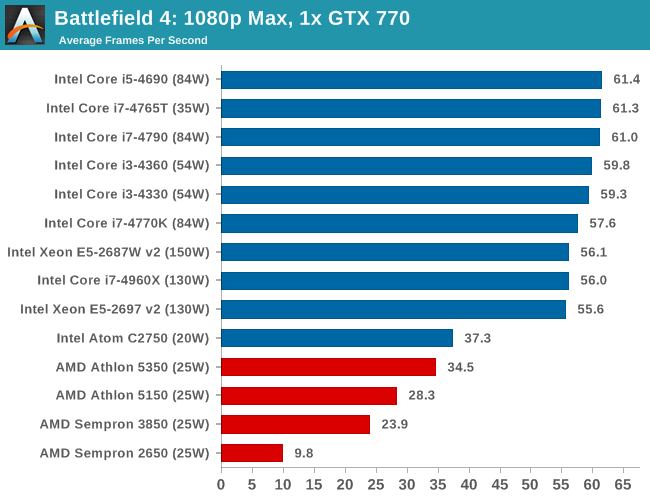
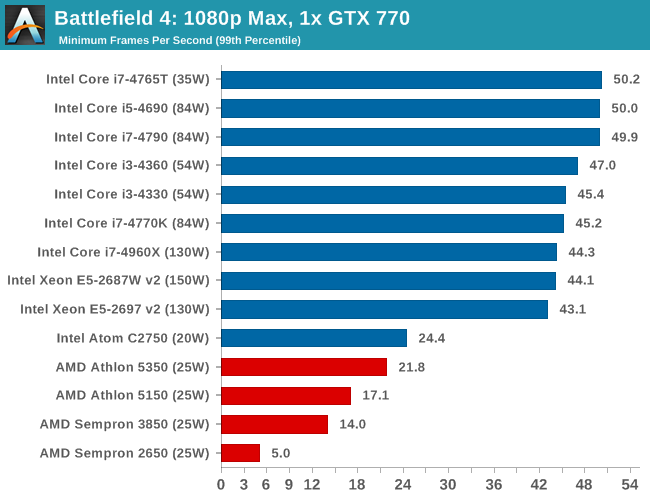










87 Comments
View All Comments
Ian Cutress - Thursday, May 29, 2014 - link
I've adjusted most of the severe cases into graphs that are easier to read :)easp - Thursday, May 29, 2014 - link
Better, but dude, the red bars stand out, and yet they represent something other than the focus of the article. Given the color pallet, I'd assume that the black bars were the least significant numbers, the background information, and yet, they actually represent the focal point of the article.Ian Cutress - Thursday, May 29, 2014 - link
I originally have had blue for Intel and red for AMD. Black is the only other color I can add that doesn't look odd; if graphs start having three-plus colors then it just looks a little odd. It might be worth greying everything and just highlighting the important points without an Intel/AMD distinction except in the labelling for the future.edzieba - Friday, May 30, 2014 - link
How about adding 'cores' to bars that are immediately relevant to the articke (e.g. an orange line in the centre of the bars for the socketed Kabinis and the Celerons). This would highlight the bars that are being compared directly, while still being in the context of all the other data, and keeping the expected blue/Intel red/AMD bar colouring intact.DanNeely - Friday, May 30, 2014 - link
Thanks, that's much better.pjkenned - Thursday, May 29, 2014 - link
Ian - good to see you had similar results as I did. The other bit is that the J1900 can be passively cooled while the AM1 chips need active coolers. That helps lower power consumption, noise and points of failure.I think I had benchmarks with the Raspberry Pi also - these are MUCH faster.
buffhr - Thursday, May 29, 2014 - link
Would have been nice if you could have included some hd video playback (1080p/720p/3D) and impressions.vesoljc - Thursday, May 29, 2014 - link
I second this!nirolf - Friday, May 30, 2014 - link
Me too! Should be fine, but what about 4K?BMNify - Saturday, May 31, 2014 - link
"but what about 4K?"what about it!, it doesn't really exist for consumers, oh perhaps you mean pseudocolor UHD 2160p, or the real colour UHD-1 3840 pixels wide by 2160 tall at 10bit or 12bit per pixel content today as used by several ARM Cortex Soc